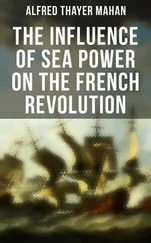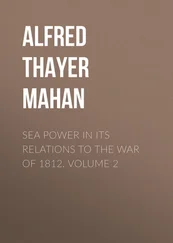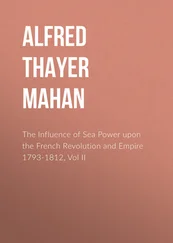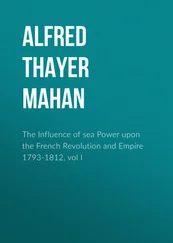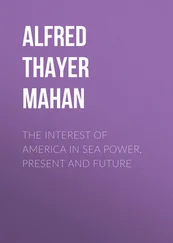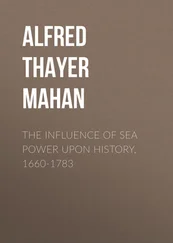Alfred Thayer Mahan - The Major Operations of the Navies in the War of American Independence
Здесь есть возможность читать онлайн «Alfred Thayer Mahan - The Major Operations of the Navies in the War of American Independence» — ознакомительный отрывок электронной книги совершенно бесплатно, а после прочтения отрывка купить полную версию. В некоторых случаях можно слушать аудио, скачать через торрент в формате fb2 и присутствует краткое содержание. Жанр: foreign_prose, История, foreign_edu, foreign_antique, на английском языке. Описание произведения, (предисловие) а так же отзывы посетителей доступны на портале библиотеки ЛибКат.
- Название:The Major Operations of the Navies in the War of American Independence
- Автор:
- Жанр:
- Год:неизвестен
- ISBN:нет данных
- Рейтинг книги:3 / 5. Голосов: 1
-
Избранное:Добавить в избранное
- Отзывы:
-
Ваша оценка:
- 60
- 1
- 2
- 3
- 4
- 5
The Major Operations of the Navies in the War of American Independence: краткое содержание, описание и аннотация
Предлагаем к чтению аннотацию, описание, краткое содержание или предисловие (зависит от того, что написал сам автор книги «The Major Operations of the Navies in the War of American Independence»). Если вы не нашли необходимую информацию о книге — напишите в комментариях, мы постараемся отыскать её.
The Major Operations of the Navies in the War of American Independence — читать онлайн ознакомительный отрывок
Ниже представлен текст книги, разбитый по страницам. Система сохранения места последней прочитанной страницы, позволяет с удобством читать онлайн бесплатно книгу «The Major Operations of the Navies in the War of American Independence», без необходимости каждый раз заново искать на чём Вы остановились. Поставьте закладку, и сможете в любой момент перейти на страницу, на которой закончили чтение.
Интервал:
Закладка:
On the same day the French fleet was sighted off the coast of Virginia by a cruiser, which reached Howe on the 7th; and two days later another brought word that the enemy had anchored on the 8th off the Delaware. There d'Estaing again tarried for two days, which were diligently improved by the British Admiral, who at the same time sent off despatches to warn Byron, of whose coming he now had heard. Despite all his energy, his preparations still were far from complete, when on the morning of the 11th a third vessel arrived, announcing that the French were approaching. That evening they anchored outside, four miles south of Sandy Hook. Howe, who during all these days was indefatigable, not only in planning but also in personal supervision of details, hastened at once to place his vessels according to the disposition which he had determined, and which he had carefully explained to his captains, thus insuring an intelligent coöperation on their part.
The narrow arm of land called Sandy Hook projects in a northerly direction from the New Jersey coast, and covers the lower bay of New York on the south side. The main ship-channel, then as now, ran nearly east and west, at right angles to the Hook and close to its northern end. Beyond the channel, to the north, there was no solid ground for fortification within the cannon range of that day. Therefore such guns as could be mounted on shore, five in number, were placed in battery at the end of the Hook. These formed the right flank of the defence, which was continued thence to the westward by a line of seven ships, skirting the southern edge of the channel. As the approach of the French, if they attacked, must be with an easterly wind and a rising tide, the ships were placed with that expectation; and in such wise that, riding with their heads to the eastward, each successive one, from van to rear, lay a little outside—north—of her next ahead. The object of this indented formation was that each ship might bring her broadside to bear east, and yet fire clear of those to the east of her. In order to effect this concentration of all the batteries in an easterly direction, which would rake the approach of the enemy, a spring 22 22 A spring is a rope taken usually from the quarter (one side of the stern) of a ship, to the anchor. By hauling upon it the battery is turned in the direction desired.
was run from the outer, or port quarter of every ship, except the leader. 23 23 The leader, the Leviathan , was excepted, evidently because she lay under the Hook, and her guns could not bear down channel. She was not a fighting ship of the squadron, but an armed storeship, although originally a ship of war, and therefore by her thickness of side better fitted for defence than an ordinary merchant vessel. Placing her seems to have been an afterthought, to close the gap in the line, and prevent even the possibility of the enemy's ships turning in there and doubling on the van. Thus Howe avoided the fatal oversight made by Brueys twenty years later, in Aboukir Bay.
These springs were not taken to the bow cable or anchor, as was often done, but to anchors of their own, placed broad off the port bows. If, then, the enemy attacked, the ships, by simply keeping fast the springs and veering the cables, would swing with their broadsides facing east. If the enemy, which had no bow fire, survived his punishment, and succeeded in advancing till abreast the British line, it was necessary only to keep fast the cables and let go the springs; the ships would swing head to the east wind, and the broadsides would once more bear north, across the channel instead of along it. These careful arrangements were subject, of course, to the mischance of shot cutting away cables or springs; but this was more than offset by the probable injury to the enemy's spars and rigging, as well as hulls, before he could use his batteries at all.
Such was the main defence arranged by Howe; with which New York stood or fell. In the line were five 64's, one 50, and an armed storeship. An advanced line, of one fifty with two smaller vessels, was placed just inside the bar—two or three miles outside the Hook—to rake the enemy as he crossed, retiring as he approached; and four galleys, forming a second line, were also stationed for the same purpose, across the channel, abreast of the Hook. 24 24 It may be recalled that a similar disposition was made by the Confederates at Mobile against Farragut's attack in 1864, and that it was from these small vessels that his flagship Hartford underwent her severest loss. To sailing ships the odds were greater, as injury to spars might involve stoppage. Moreover, Howe's arrangements brought into such fire all his heavier ships.
The retreat of these was secure into the shoal water, where they could not be followed. One 64 and some frigates were held as a reserve, inside the main line, to act as occasion might require. The total available force was, six 64's, three 50's, and six frigates. D'Estaing's fleet, in detail, consisted of one 90-gun ship, one 80, six 74's and one 50. Great as was this discrepancy between the opponents, it was counterbalanced largely by Howe's skilful dispositions, which his enemy could not circumvent. If the latter once got alongside, there was little hope for the British; but it was impossible for the French to evade the primary necessity of undergoing a raking fire, without reply, from the extreme range of their enemies' cannon up to the moment of closing. The stake, however, was great, and the apparent odds stirred to the bottom the fighting blood of the British seamen. The ships of war being short-handed, Howe called for volunteers from the transports. Such numbers came forward that the agents of the vessels scarcely could keep a watch on board; and many whose names were not on the lists concealed themselves in the boats which carried their companions to the fighting ships. The masters and mates of merchantmen in the harbour in like manner offered their services, taking their stations at the guns. Others cruised off the coast in small boats, to warn off approaching vessels; many of which nevertheless fell into the enemy's hands.
Конец ознакомительного фрагмента.
Текст предоставлен ООО «ЛитРес».
Прочитайте эту книгу целиком, купив полную легальную версию на ЛитРес.
Безопасно оплатить книгу можно банковской картой Visa, MasterCard, Maestro, со счета мобильного телефона, с платежного терминала, в салоне МТС или Связной, через PayPal, WebMoney, Яндекс.Деньги, QIWI Кошелек, бонусными картами или другим удобным Вам способом.
1
In customary representation of maps, North is upper, and movement northward is commonly spoken of as up. It is necessary therefore to bear in mind that the flow of water from Lake George to the St. Lawrence, though northward, is down .
2
Afterwards Captain of the Fleet (Chief of Staff) to Rodney in his great campaign of 1782. Post , p. 222. He died a Rear-Admiral and Baronet in 1789.
3
Author's italics.
4
Remembrancer , iv. 291.
5
The radeau had six 24-pounders, six 12's, and two howitzers; the gondola, seven 9-pounders. The particulars of armament are from Douglas's letters.
6
By American reports. Beatson gives the force sent out, in the spring of 1776, as 13,357. ("Mil. and Nav. Memoirs," vi. 44.)
Читать дальшеИнтервал:
Закладка:
Похожие книги на «The Major Operations of the Navies in the War of American Independence»
Представляем Вашему вниманию похожие книги на «The Major Operations of the Navies in the War of American Independence» списком для выбора. Мы отобрали схожую по названию и смыслу литературу в надежде предоставить читателям больше вариантов отыскать новые, интересные, ещё непрочитанные произведения.
Обсуждение, отзывы о книге «The Major Operations of the Navies in the War of American Independence» и просто собственные мнения читателей. Оставьте ваши комментарии, напишите, что Вы думаете о произведении, его смысле или главных героях. Укажите что конкретно понравилось, а что нет, и почему Вы так считаете.

